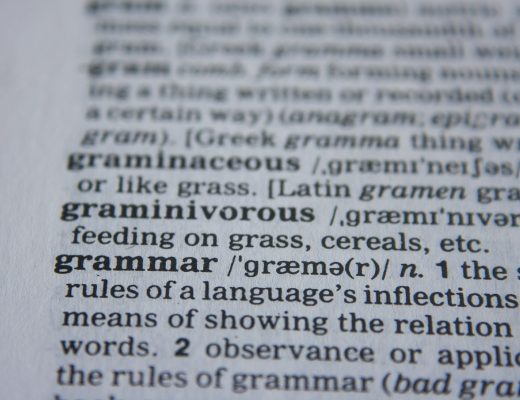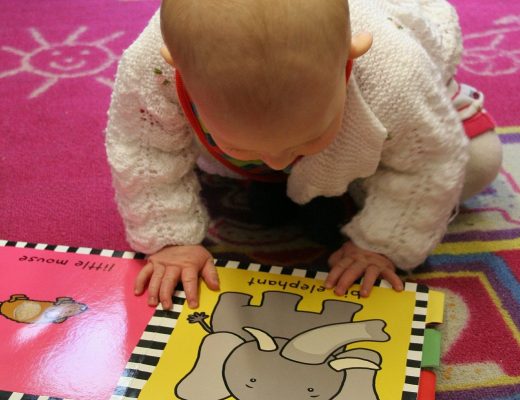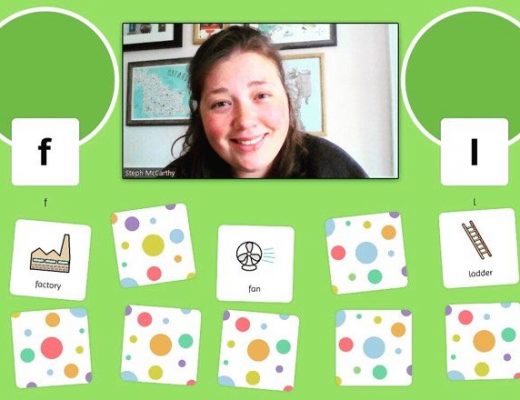This blog series will take you through some of the best toys to use to support speech, language and communication development. All of the toys recommended are used in signing classes, for individual therapy or with my own daughter at home.
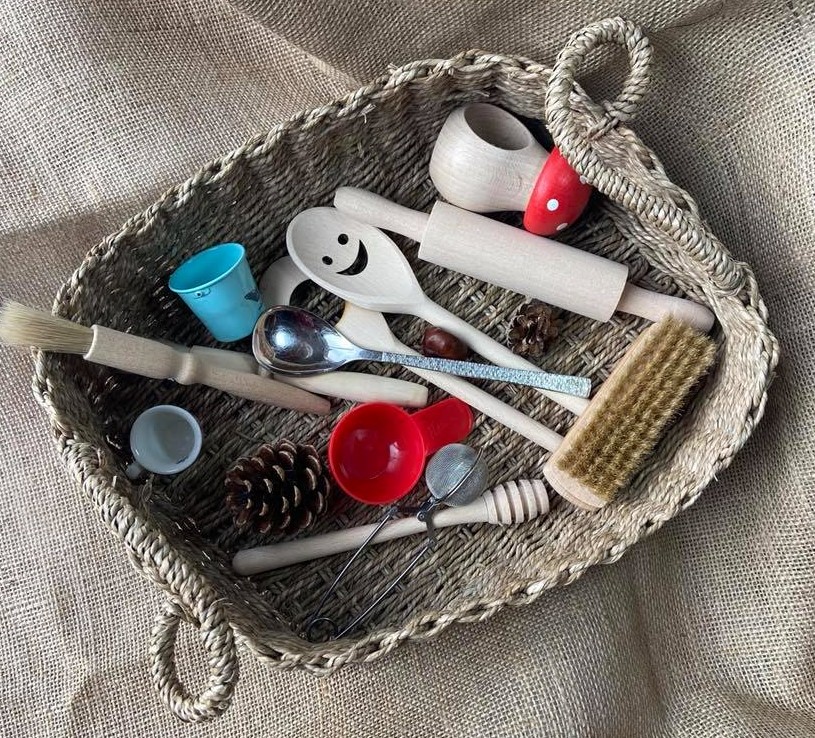
This month we’re looking at Treasure Baskets. This concept comes from heuristic play, a wider play style which was first described by Elinor Goldschmied in the 80s. The aim of heuristic play is to support children to explore the texture, nature and possibilities of a range of items. It is a fairly broad aim, so treasure baskets help to make this functional.
A treasure basket in my house is a wicker box full of household items like a whisk, nutcracker, metal spoon, egg box, wooden spoon, paint brushes, a sponge, coaster, shells, pebbles, conkers, foil blanket (as seen below) and pinecones. You can start building a treasure basket of your own with this starter kit from Amazon.
Case study
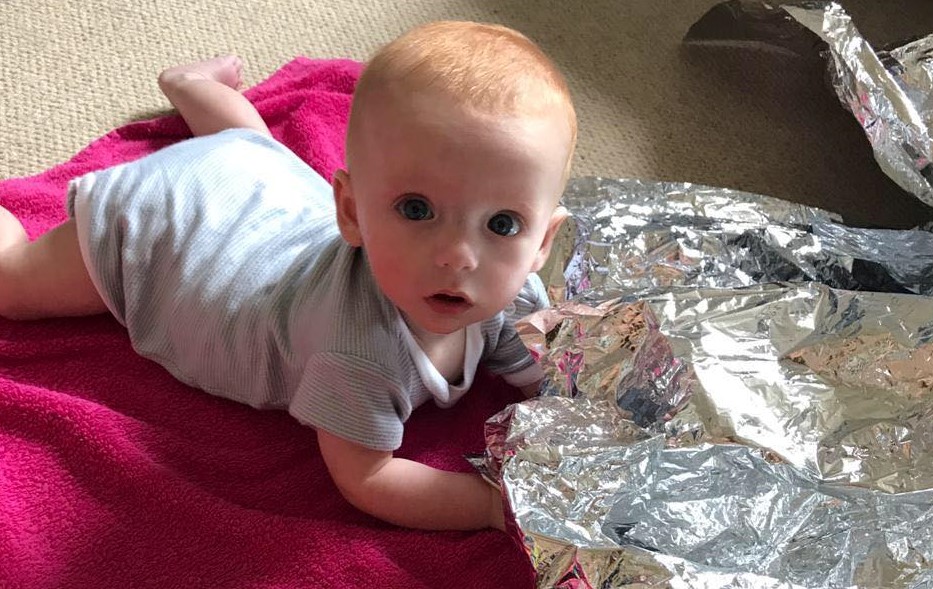
Research shows that providing children with sensory stimulation builds new connections in their brains. When they feel the cold metal, rough wood or soft fabric they will be strengthening existing neural connections or forming completely new ones. Toys designed for children often have rounded edges and carefully finished surfaces leading to them all feeling similar, so new textures are essential.
My nephew (pictured above aged five months) loves exploring his foil blanket with his hands and feet. He can give it a chew, watch light reflecting off it and make lots of noise with it.
How to play
The key idea behind heuristic play is that it is child led. It is important for caregivers to remain nearby if there are smaller parts due to choking risks, but essential that you don’t direct the activity. Playing alongside is a great way to support expanding play skills by modelling what can be done with certain toys. This can lead to your child trying the same thing you are doing with the toys they are holding, or just taking your toys from you!
Research shows that less direct involvement from adults (external regulation) results in more private speech, also known as ‘talking to yourself’. Private speech is incredibly important when it comes to the development of self-regulation, imagination and language skills.
A great way to engage your child with a treasure basket is to have it tucked away and bring it out as a treat. Toys like the foil blanket can be rustled noisly to serve as a cue for what is to come, helping your child to develop anticipation.
Remember to always let your child lead (this goes for any type of play), use open questions to avoid directing their thoughts, and lots of comments on what they are doing in the moment. These three strategies will ensure your child is using their imagination and developing their language skills.
Play skills are directly linked to language competence. Here is an idea of the typical ages and stages of play development (adapted from ‘From Birth to Five Years’ by Mary D. Sheridan):
| From birth | Exploratory play | Reflexes, banging and throwing |
| 9 months + | Cause-and-effect play | Pressing buttons and pulling strings for a specific outcome |
| 12 months + | Functional play | Using common objects as intended e.g. talking on toy phone |
| 18 months + | Pretend play | Feeding teddy pretend food |
| 2 -3 years | Sequential and symbolic play | Acting out familiar sequences e.g. putting dolly to bed, and pretending a block is a car |
| 3-4 years | Imaginative and narrative play | Make-believe play and use of miniatures with sometimes complex stories to go alongside |
So there you have it, sometimes when it comes to playtime the simpler the toy the more language opportunities you create. Next month we will be focusing on story bags.
Steph is a qualified speech and language therapist. This article contains affiliate links which do provide a small commission without increasing the price for the purchaser.
